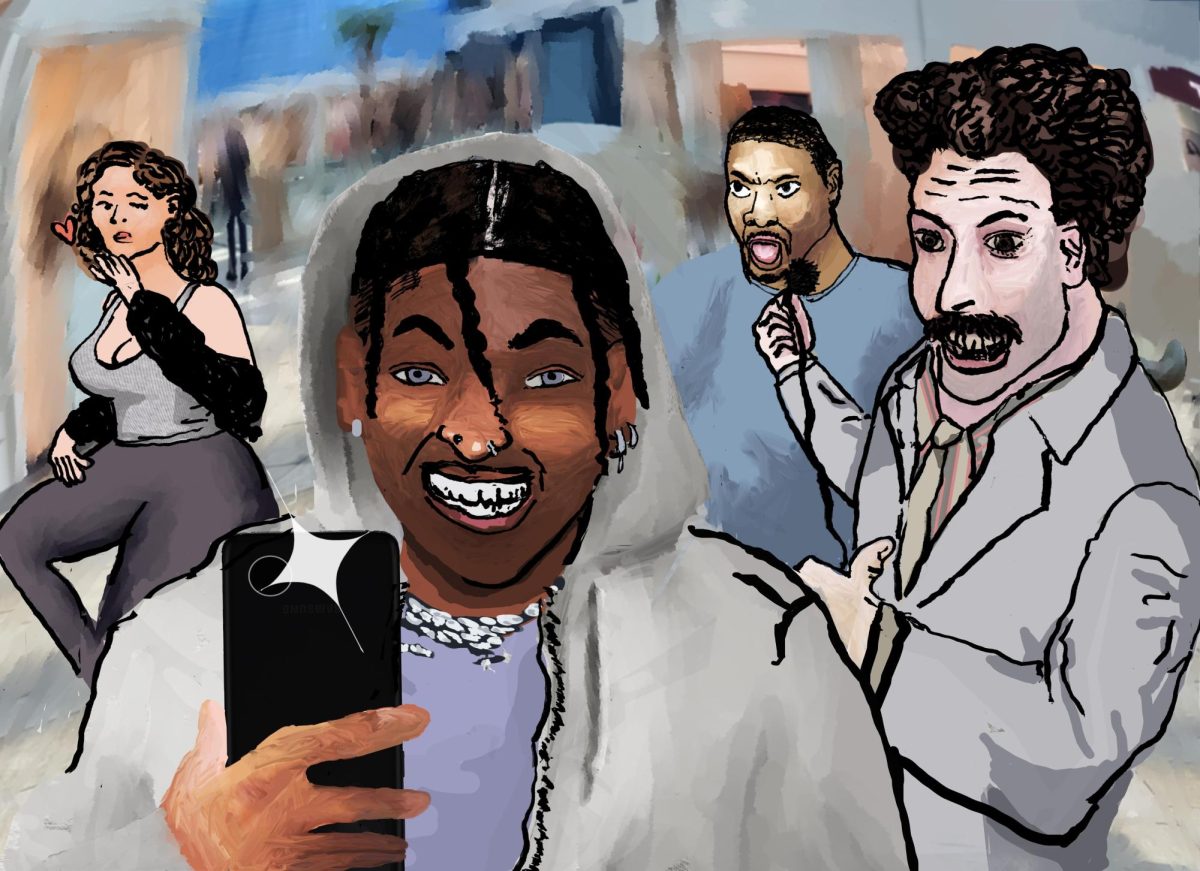The Keck School of Medicine at USC and Children’s Hospital Los Angeles released a study and a video last week that claimed there is a correlation between the development of autism and the amount of air pollution a mother is exposed to during pregnancy. as well as pollution exposure during a newborn’s first year of life.
“What we found is that moms who live in areas with higher levels of particulate matter are about twice as likely to have a child with autism if they are exposed to higher levels of pollution, compared to moms exposed to the lowest from traffic,” said Heather Volk, the study’s principal investigator and assistant professor of preventive medicine at the Keck School.
“You can live in a place with generally clean air quality, but if you live by a busy road and you’re exposed to a lot of pollution from traffic, you can be at risk to have a child with autism and if you live in a place where you live far from the road, for example, but an area that has generally lower air quality, you might be at increased risk to have a child with autism as well.”
The problem is that no matter how many studies are done, researchers treat autism like it is a villainous disease and do not focus enough on how people with autism can contribute to the world.
According to Autism Speaks, the leading fundraiser and advocacy organization for people with autism spectrum disorders, autism is found in 1 in 88 children and 1 in 54 boys.
I was diagnosed with Asperger’s Syndrome, sometimes called AS, in the early 1990’s, before it was fully recognized in the Diagnostic and Statistical Manual of Mental Disorders, better known as the DSM-IV, the unofficial psychiatric bible. This past weekend, the American Psychiatric Association voted to remove Asperger’s Syndrome from the DSM-5, the latest version of the manual, and merge Asperger’s with autism.
When I was in junior high, I thought of Autism like the X-Men of comic book fame. In the third X-Men movie, one of the mutants nearly gets “cured” of his ailment, having bird wings growing out of his back, at the insistence of his father. Many people associate autism the same way, a disorder that parents see their children in emotional agony and want to be rid of the “ailment”, so money gets thrown around to find the cause, which would naturally lead to a search for a cure. The problem with that thinking is that with kids who have Asperger’s and milder forms of autism, the emphasis is on the negative, rather than the positive. Society then views the “disorder” as this horrific malady that isn’t understood but feared by the average person.
Autism has a variety of “disorders” on a spectrum, and Asperger’s is on the higher-functioning end. People with AS have intense, obsessive interest areas with fast memory recall. When I was younger, I memorized the Thomas Guide map for metro areas in Los Angeles and Phoenix, my birth city. Adults would call me asking for directions when I was in elementary and junior high school. If only Google Maps hadn’t come along. As a result, kids with Asperger’s are sometimes referred to as “little professors.”
But those talents come at a price. For starters, a social functions can be severely impaired including little eye contact, difficulty with conversation, and difficulty interpreting body language. Also, my motor coordination leaves a lot to be desired. It took me years to learn how to tie my shoelaces. All five of my senses have heightened sensitivity, which leads to all sorts of problems. My skin is super sensitive to temperature and touch while my food palate is limited because I can feel the texture of the food along with the flavor and the smell more than others.
It was rough from elementary school all the way up to high school, with teasing and bullying by kids who didn’t understand and parents didn’t know what autism was. There were times where I was cornered and spat on. In my sophomore year of high school, I was pantsed during volleyball practice by someone on my own team.
Through all that, I had, by the grace of God, proactive parents who used services available from the state and other agencies. I went through years of speech therapy to improve the lisp and how to have conversation. Occupational therapy was administered to improve hand-eye coordination and balance.
For years, people have come up with a variety of potential causes for autism, most famously when a study concluded vaccines can cause autism because of the mercurial preservative thimerosal. The study, written by former British surgeon Dr. Andrew Wakefield, has been flatly disproved by multiple groups, including the Centers for Disease Control.
But thanks in part to celebrities like Jenny McCarthy who publicly blamed vaccines for her son’s autistic condition, many parents have withheld their children from getting vaccinated. This trend has led to diseases like measles and rubella to come back into America, where the infections had largely been eradicated.
Many parents have claimed that gluten-free diets have helped their kids. Seeing the clamor online, my parents had me tested for gluten allergy, the supposed sign that helps trigger autistic-like conditions. As it turned out, I didn’t have the allergy. Only pollen and a mild cat allergy. A study in 2010 by the University of Rochester debunked the link between gluten and autism.
Much of the focus on autism has been in children, but there is a whole generation of college and high-school aged people that are on the cusp of trying to live independently with autism. So here’s a novel idea. Rather than put all of our resources on what causes the “disorder,” spend the bulk on helping those that have autism and help integrate them into the world.
When I was diagnosed, my parents were given dire predictions that I wouldn’t live a normal life. They were told I’d never drive a car or graduate college, much less high school. Thanks to their proactive nature and insistence on having me learn in non-“special education” classes, I’m on the verge of graduating with my bachelor’s degree. Am I scared of how to live in the real world, outside of a parental unit or school structure? Yes. Do I fear not being able to adjust to the expectations of society on my own? Sure. Do I worry about the next phases of life like marriage, if I’m lucky, or having children, especially at the possibility of having an autistic child? Absolutely. But I will face those challenges with open arms.
The Psalms say, “For you formed my inward parts; you knitted me together in my mother’s womb.” Such is my perspective for high-functioning autism. It shouldn’t be about the pains of autism, but about making life as rewarding and fulfilling as it can be.
Andrew Clark is a graduating senior who is thankful for all those that have helped keep his life’s compass pointed true north.





